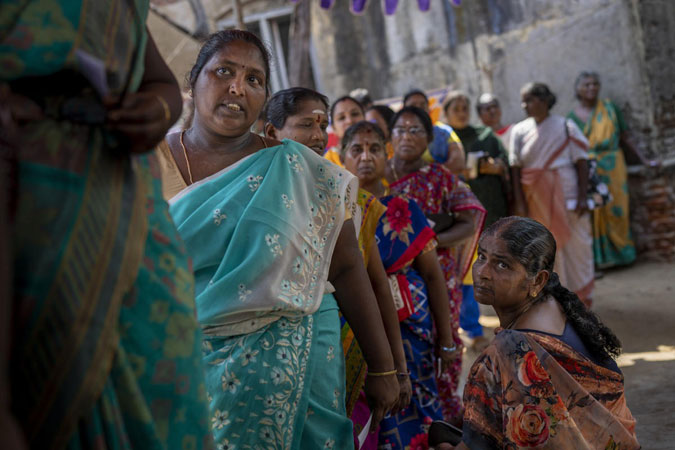 Voters began queuing at polling stations in parts of the first 21 states to hold ballots hours before they were allowed in at 7am, from the Himalayan mountains to the tropical Andaman Islands.
Voters began queuing at polling stations in parts of the first 21 states to hold ballots hours before they were allowed in at 7am, from the Himalayan mountains to the tropical Andaman Islands.
Nearly 970 million voters – more than 10% of the world’s population – will elect 543 members to the lower house of parliament for five years during the staggered elections that run until June 1. The votes will be counted on June 4. There are a total of 28 states in India.
The voting ended at 6pm and the turnout was estimated at around 60% of 166.3 million eligible voters in the first round, the election authority said in a statement. By comparison, India’s 2019 national election registered the highest turnout – 67.11% – in the history of Indian parliamentary elections.
The second round will be held on April 26, and turnout is expected to increase over the course of the voting. Authorities said the voting was largely peaceful on Friday, although media reports said some supporters of Mr Modi’s Bharatiya Janata Party and the opposition Congress party clashed in Chhindwara, a city in central India. Some workers of the BJP and the All India Trinamool Congress clashed in West Bengal state on Thursday night. Some injuries were reported, but the election authority did not give any details. This election is considered one of the most consequential in India’s history and will test the limits of Mr Modi’s political dominance. If Mr Modi wins, he will be only the second Indian leader to retain power for a third term, after Jawaharlal Nehru, the country’s first prime minister. Most polls predict a win for Mr Modi and his BJP.
They face a broad opposition alliance led by the Indian National Congress and powerful regional parties.
It is not clear who will lead India if the opposition alliance, INDIA, wins the election. The alliance’s more than 20 parties have not put forward a candidate, saying they will choose one after the results are in.
The election comes after a decade of Mr Modi’s leadership, during which the BJP consolidated power through Hindu-first politics and economic development.